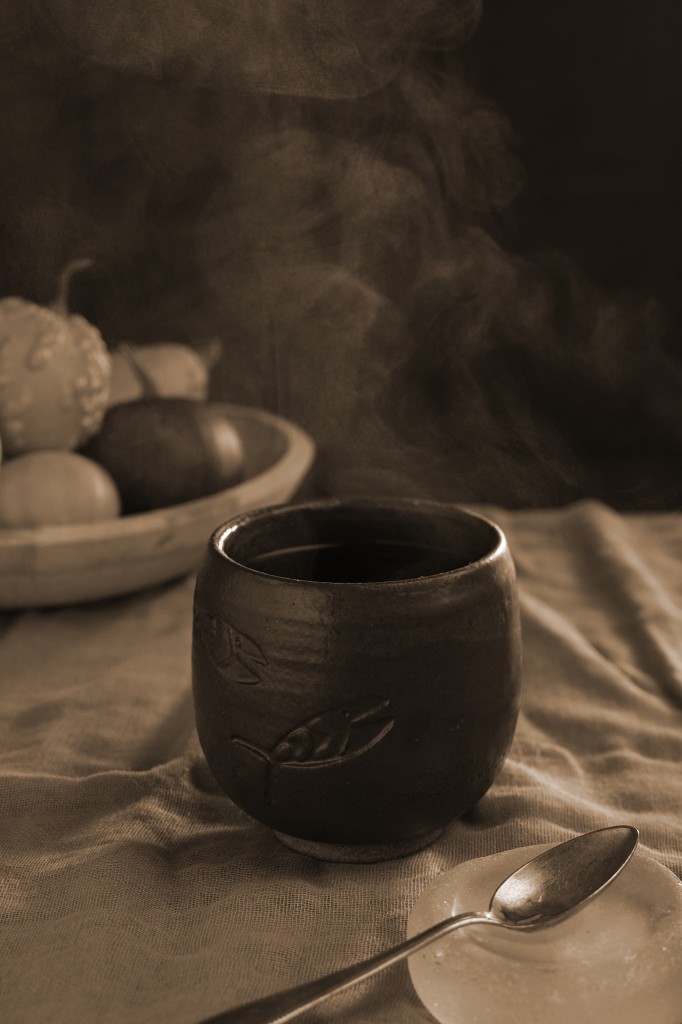On Wabi-Sabi Weekends, I post excerpts from my book, Simply Imperfect: Revisiting the Wabi-Sabi House.
“I find that what your people need is not so much high imaginative art but that which hallows the vessels of everyday use.” — Oscar Wilde
Tea students handle every utensil, from the bamboo water scoop to the ceramic tea bowl, as if it were precious, with the respect they would give a rare antique. This fundamental Tea lesson is the first step toward cultivating your wabigukoro, or wabi mind and heart.
Start with the container holding whatever you drink to start your day. If you’re using plastic or a mug from a now-defunct mortgage company, stop. Don’t start your day with thoughtless consumption and unintended messages. Treat yourself to pottery that feels solid and heavy in your hand. Admire your mug’s shape, textures and colors every morning.
San Francisco-based Tea master Christy Bartlett, who represents the family of Rikyu’s descendants, has spent five minutes every morning admiring her tea bowl for 22 years—and every morning she finds something new. Studying her tea bowl’s colors, shape and weight has trained Christy to look thoughtfully at everything she uses every day. The slightest seasonal light change and fresh produce from the city’s markets become works of art under her gaze. When she cooks, Christy meditates on the different shapes she’s making as she cuts vegetables into long, narrow slices or chunky bits. “It’s simple and perhaps simple-minded,” she admits, “but sometimes we need to be that way. And the kitchen is a place where we can develop a sense of the combination of aesthetics and function, pay attention to the small moments of life. If you can find great beauty in the small moments, there’s no greater gift you can find.”
Over sushi in a Kyoto restaurant, former Texan Gary Cadwallader, who now teaches Tea at the Urasenke Konnichian of Kyoto, told me that visiting museums and shopping with an eye for color, texture and patina (not just price) cultivates the Tea master’s eye. “You can get a grater for a few hundred yen or you can get a more expensive one of copper,” Gary said. “But the copper one will last long enough for your great-grandchildren to use. If we use high-quality objects in our daily lives, our life itself becomes a sort of training. We come to use each tool with deep care and consideration as we do in Tea. Then, the way a person lives makes tradition.”
